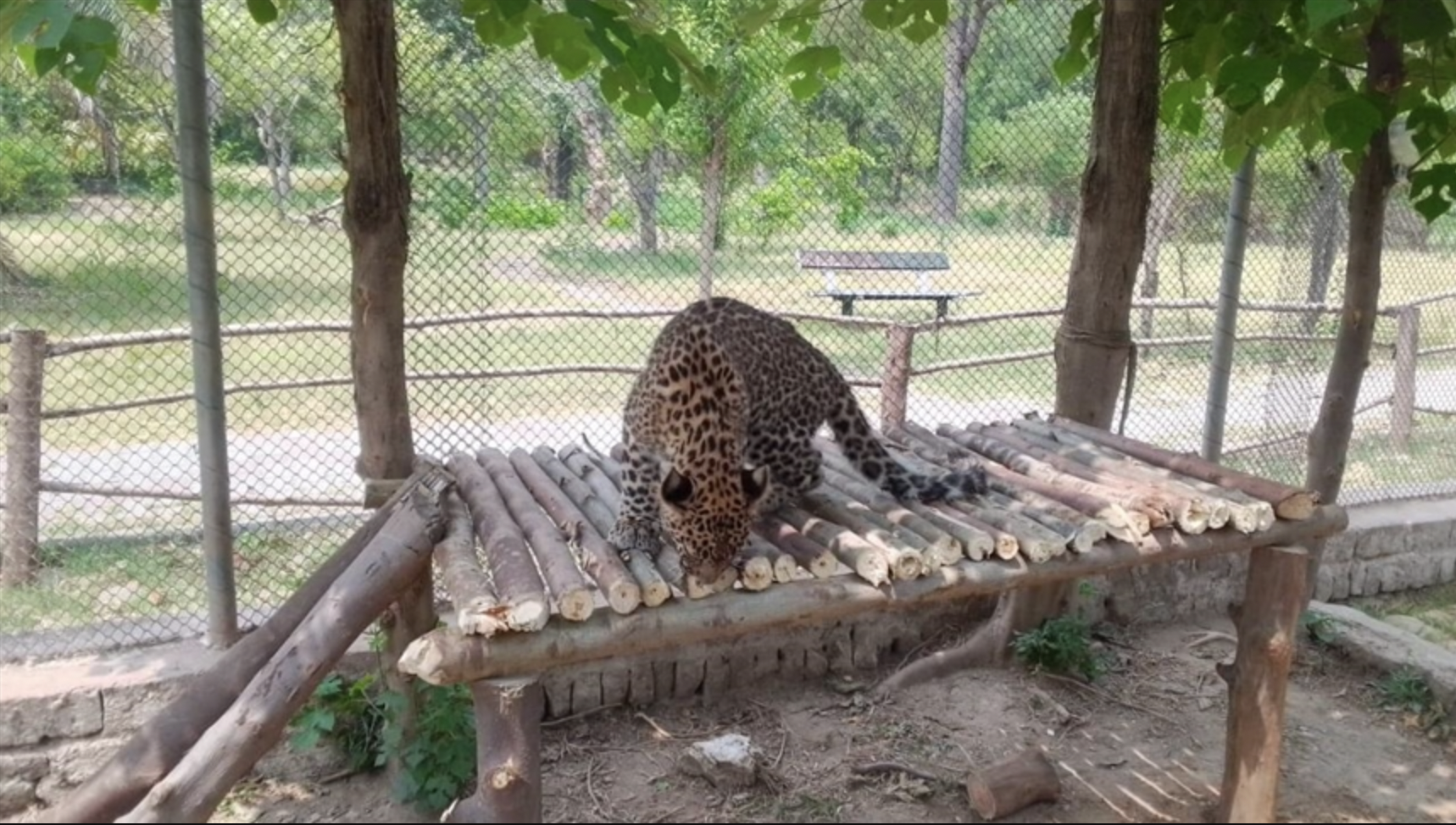
Conservationists have warned that Pakistan’s already critically endangered common leopard population is facing a range of threats, including increasing encounters with humans, depleting forest cover and illegal hunting.
Despite some signs of rising numbers, particularly in designated protected areas, there is a serious risk that the animal could be completely wiped out from Pakistan, according to Rab Nawaz, a senior official at WWF-Pakistan.
There are only a handful of protected areas for leopards in Pakistan such as the Margalla Hills National Park in the capital Islamabad, Ayubia National Park in the northwestern Khyber Pakhtunkhwa (KP) province, and Machiara National Park in Pakistani-administered Kashmir.
Nawaz said there has not been a comprehensive study to determine the exact figure, but estimates indicate the common leopard population in Pakistan is currently in the hundreds.
KP is believed to have the highest number, followed by the Kashmir region and the northeastern Punjab province.
Sharing a similar view, Rina Saeed, a wildlife expert and head of the Islamabad Wildlife Management Board (IWMB), decried the lack of specific data about the leopard population.
“We simply don’t know if the number of leopards has increased or decreased,” she told Anadolu.
A 2021 camera trap study the IWMB conducted in the Margalla Hills National Park found at least eight leopards in the protected area.
Estimates suggest there are probably at least a dozen inside the park, she said.
“Leopards in Margalla Hills National Park are better protected than other areas of Pakistan because we have very strict patrolling, and we have communicated to the villagers that these leopards are protected under law, so harming them is a criminal offence,” she said.
The IWMB has also converted the Islamabad Zoo – once notorious for its maltreatment of animals – into a wildlife rescue and rehabilitation center.
Among some 270 rescued animals at the center are three leopards, with one of them set to be returned to the wild soon.
Major threats
Saeed said the most pressing dangers to the leopard population in Pakistan are loss of habitat, poaching and hunting, and deadly encounters with humans.
As human settlements increasingly expand into forest lands, there is more leopard-human conflict, she explained.
Leopards prey on livestock and people retaliate by killing the endangered big cats, she said.
The latest such incident happened last month in the Dera Bugti district of the southwestern Balochistan province.
The villagers recorded the act and posted videos on social media, sparking backlash from conservationists and wildlife lovers.
No action, however, was taken against the people involved.
Nawaz, the WWF-Pakistan official, pointed out the dilemma in such cases: “When a big cat attacks livestock, especially in an enclosed area, they kill all the animals, which is a loss of livelihood for people from poor communities. Since there are no insurance schemes to cover these losses, people have no option but to eliminate the threat before it kills more of their livestock.”
Another issue is that younger leopards sometimes stray outside the protected areas and go near villages, where people hurt or kill them out of fear, he said.
Nawaz said authorities have taken action in some cases, but many more “probably go unreported” and only come to light once it is too late.
“As we expand our urban and rural footprint, we force these wild animals to move from one area to another, which makes them vulnerable to harm from people,” he said.
“They need large areas in forests to feed and breed, and that is being taken away from them.”
Dwindling leopard numbers have consequences for everyone as they are crucial to maintain ecological balance, he emphasized.
“They keep wild goat populations in check, which in turn reduces the chances of disease outbreaks and overgrazing of pastures,” Nawaz explained.
“Leopards are apex predators, top of the food chain, and without them the entire food chain would be impacted.”
1732090022-0/Elmo-and-Amelia-(1)1732090022-0-405x300.webp)
1725523665-0/Minecraft-Movie-(1)1725523665-0-165x106.webp)

1732089759-0/BeFunky-collage-(75)1732089759-0-165x106.webp)

1732090878-3/Untitled-design-(22)1732090878-3-270x192.webp)

1724268870-0/Supreme-Court-of-Pakistan-(2)1724268870-0-270x192.webp)











COMMENTS
Comments are moderated and generally will be posted if they are on-topic and not abusive.
For more information, please see our Comments FAQ